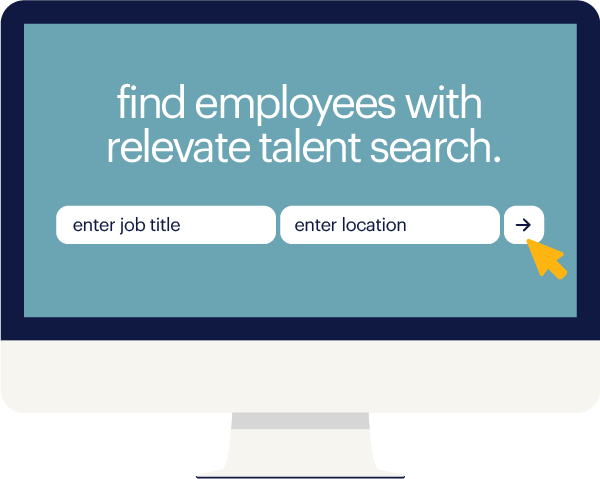You know that turnover is bad for business, but just how bad is bad? The answer might surprise you: The average cost for replacing an employee is 21 percent of their annual salary. Multiply that by every employee you're losing, and the costs can be crippling.
If your business is one of the many that seems to have butterfingers when it comes to holding on to talent, read on. These three tips will help you reel in those out-of-control retention rates and get turnover back under control. Here's what to do.
 |
the average cost for replacing an employee is 21% of their annual salary.
|
1. improve pay and benefits
The first place you should look to stem the tide of turnover is your compensation and benefits. Unsurprisingly, low pay was the number-one reason employees chose to leave, according to our 2018 Employer Brand Research, and great salary and benefits was the main incentive that motivated them to stay. Given how heavily the question of compensation weighs on employees' minds, making a few tweaks to what you pay and the benefits and perks you provide may be all you need.
-
Use an online salary calculator to get an idea of the current going rate for talent in your market. Pay above average.
-
Offer outstanding perks. Our research found that early Friday releases, flexible, remote work options and onsite amenities (like gyms and dry cleaning) were highly prized.
-
Tailor benefits to align with employee life stages. For example, more comprehensive healthcare for baby boomers and assistance with student loans for millennials.
what does today's top talent value most in a benefits package?
 onsite amenities to maximize time-in-office
onsite amenities to maximize time-in-office
 packages that enhance quality of life
packages that enhance quality of life
 investments in ongoing training and professional development opportunities
investments in ongoing training and professional development opportunities
 benefits tailored to life stages
benefits tailored to life stages
 greater communication and education
greater communication and education
2. care about career development
Hiring great talent is only the beginning. If you don't have the infrastructure in place to support them from day one and beyond, then you'll never be rewarded with the full fruits of their labor. Fifty-eight percent of employee respondents to our survey said that their companies didn't have the growth opportunities they'd like to see in order for them to stay long-term — and an additional 57 percent said they'll have to leave their current companies if they want to take their careers to the next level. Get this right, and you'll not only be able to hold on to talent longer, you'll improve performance and output, too.
-
Start a mentorship program to connect younger workers with more experienced colleagues in the paths they'd like to pursue.
-
During employee reviews, ask what skills they'd like to develop, and connect them with training programs (either in-house or offsite) that can help them.
-
Provide a clear roadmap to advancement within your organization so employees know both what to aim for, and what's expected of them in order to reach the next step.
 |
58% of employees said that their companies didn't offer enough growth opportunities for them to stay long-term.
|
3. promote a healthy work-life balance
Just because your employees are physically present 40 hours a week doesn't mean they're engaged. The stress from long days, with little to no flexibility to adjust scheduling or take time off can add up, and create major turnover problems if left unaddressed for long. Ninety-four percent of employee respondents said they'd like their employers to provide benefits that meaningfully impact their quality of life, so if you can help your employees achieve the right balance between work and rest, they'll stand a much lesser chance of burning out and leaving.
-
Provide work-from-home options. Over a third of employees said they were considering leaving their jobs because they didn't have the ability to work from home.
-
Increase vacation days. Taking time off is restorative and will boost your team's productivity upon return — vacationers were found to be 65 percent more likely to receive a raise or bonus.
-
Offer outside-the-box scheduling. Think: four-day work weeks, six-hour days or early Friday releases to better align work hours with when employees are at their peak.
 |
36% of employees said they were considering leaving their jobs because they didn't have the option to work from home.
|
partner with a staffing firm
Curbing turnover can be done by studying these strategies and implementing them in your workplace. But if you just don't have the time to devote to the task full-time, or you'd just like a little extra expert assistance, consider partnering with a staffing firm. Staffing firms can:
-
send you talent who fits your workplace, helping to stave off some of the common culprits of low engagement like incompatibility with workplace culture
-
provide you with the latest local trends in benefits and compensation to help you ensure that what you're offering is still in line with the market
-
develop employee engagement strategies tailored to your business to assist you in engaging and retaining your all-stars long-term
Follow these steps closely and start tackling your turnover problem today. To prevent this kind of issue from arising again, consider developing a more comprehensive staffing strategy. By changing the way you hire, you’ll be able to get more employees who match your workplace and stand a better chance of being content on the job. Click below to see if a staffing strategy is right for your business, and get a step-by-step guide on how to build your own. Or if you’d prefer to work with a staffing partner to create one, we’re here to help.









